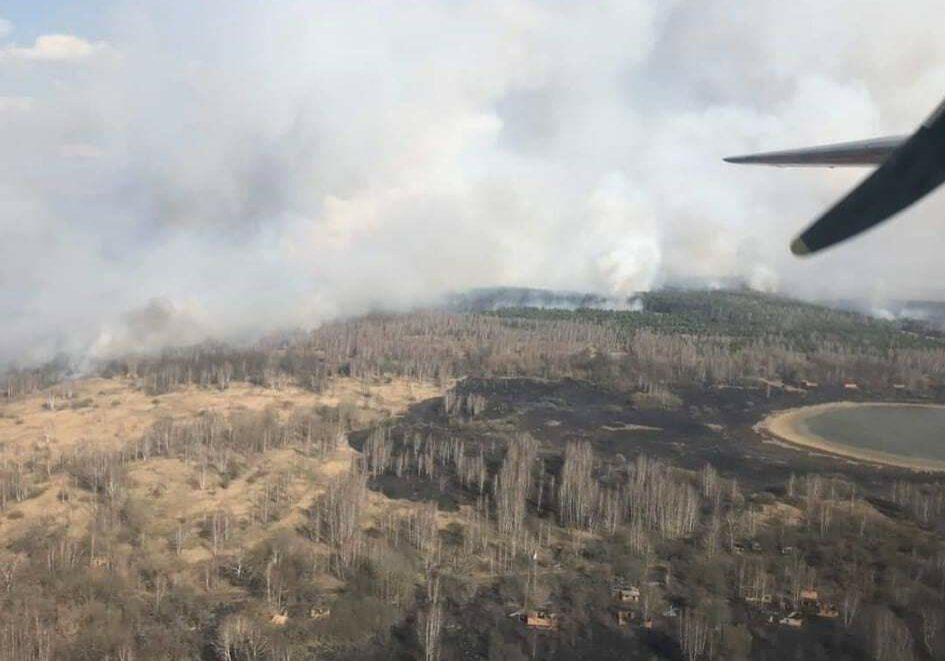The Chernobyl tinder box: War increases fire risks

Forest fires have again erupted around the defunct and radioactively-contaminated Chernobyl nuclear power facility. Fires reloft and redistribute radionuclides trapped in soil and the forest litter, which is taking much longer to decay than it should, providing further fuel for fires.
When one reactor core of the 4-reactor Chernobyl complex melted down and exploded in 1986, it showered large swaths of land across the Former Soviet States with long-lived man-made radionuclides, fallout which also extended to Europe.
Although reports claim the most recent fires closest to the site have been extinguished, controlling the creation and extinguishing of these fires — which often spring up this time of year — is made more difficult by the occupation of Russian military forces. The cause of these latest fires is unclear, although the Ukrainian Parliament claims “armed aggression of the Russian federation” is probably to blame.
Areas contaminated by the ruined reactor, including the red forest, have been ablaze a number of times: 1992, 2002, 2008, 2010, 2015 and 2018. Under ever more extreme climate conditions, wildfires will get larger and more frequent.
In 2020, a forest fire, reportedly the result of arson, set the Chernobyl Zone ablaze, coming within one kilometer of the facility, which stores radioactive waste not only from normal reactor operation, but also the ruined fuel from the 1986 meltdown and explosion.
But the Chernobyl site itself doesn’t have to catch fire to set aloft the radioactivity trapped in the area. During just three fires in the Zone in the early 2000s, eight percent of the original cesium 137 released was redistributed. And during the 2020 fire, radiation levels increased to 16 times higher than they had been previously.
Each time a fire ignites, it threatens people within and around the Zone, particularly firefighters, who have exhibited acute radiation exposure symptoms such as a tingling of the skin, and may be exposed to more radiation than the current Chernobyl workers themselves.
The climate crisis and improper forest litter decay increase the probability of stronger fires in the contaminated area. The Chernobyl Zone is a tinder box already. War clearly raises the risk of fires even further.
State agency of Ukraine on Exclusion Zone management, CC BY 4.0, via Wikimedia Commons
Support Beyond Nuclear
Help to ensure a safer, greener and more just world for all

